It’s all too common for a vehicle to be backing out of a driveway or parking space and hit something behind it because the driver can’t see it. Tragically, many people, especially children, are hit by reversing vehicles in backover accidents each year.
What do you need to know about backover accidents — and how can you prevent them and keep pedestrians safe? Read on to find out.
What is a Backover Accident?
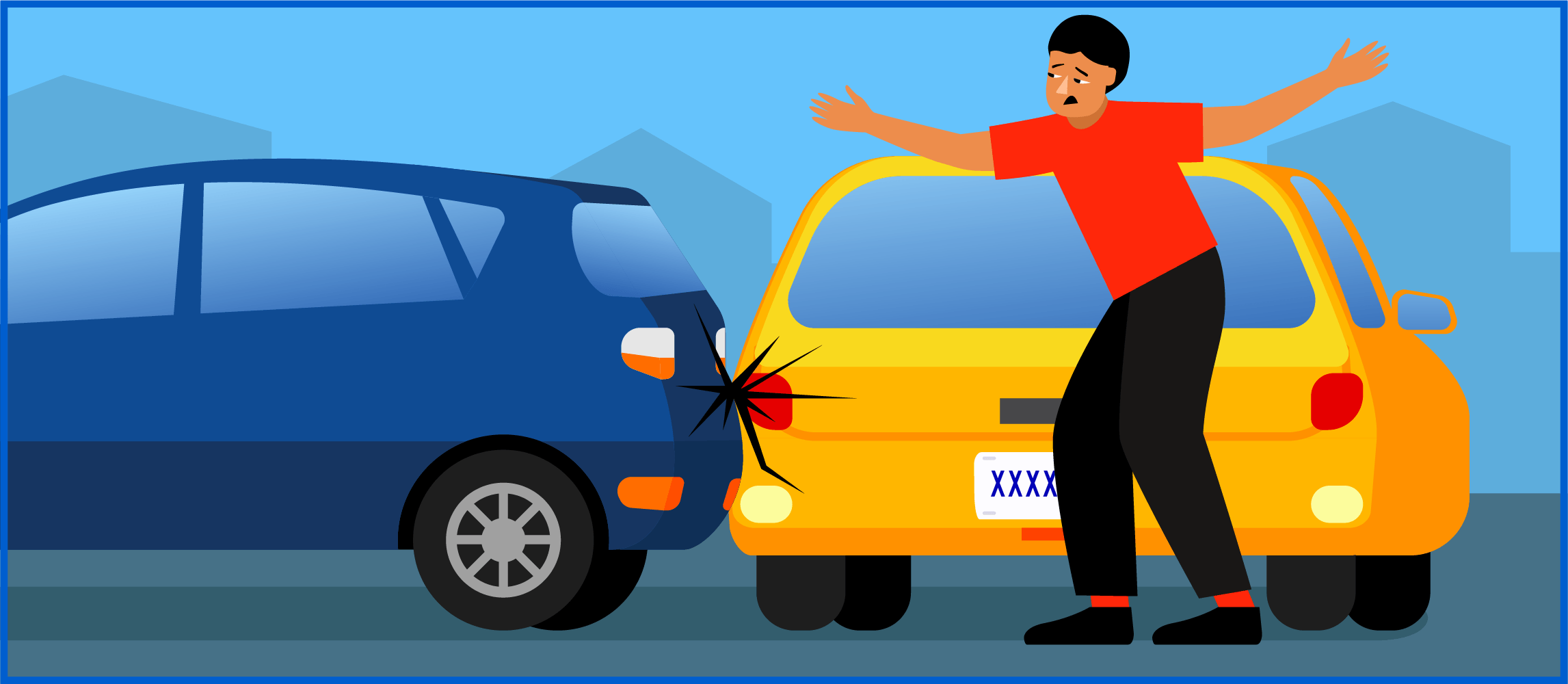
A backover accident is when a person is struck by a vehicle that is in reverse and moving backward.
These kinds of accidents can happen anywhere where vehicles commonly back up: Parking lots, driveways, workplaces, and even normal streets.
Backover accidents are particularly dangerous because every vehicle has blind spots, or areas around it that the driver of the vehicle cannot see, even when using their rearview and side mirrors.
Blind spots to the sides of the vehicle can typically be seen by the driver if they turn and look behind them. But the area immediately behind a vehicle is known as a “blind zone,” and without a backup camera or other technology, there’s no way for the driver of a vehicle to be able to see their blind zone while reversing.
The blind zone is largest in large vehicles like trucks or SUVs. And backover accidents commonly affect children and the elderly because they have smaller statures and move more slowly, meaning they can easily get into a vehicle’s blind zone where the driver cannot see that they are there.
Traffic school can help you keep a clean driving record, prevent insurance increases, and more!
Common Causes of Backover Accidents
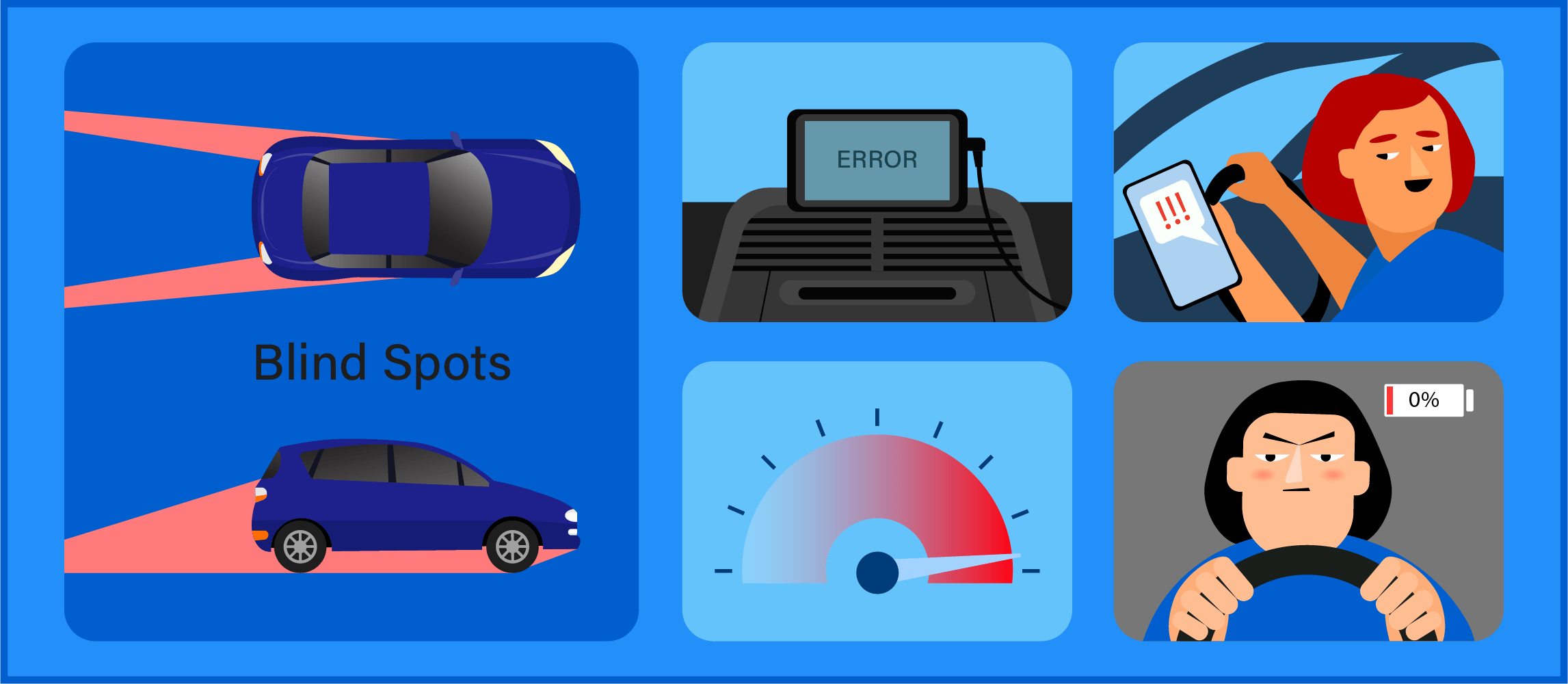
The most common cause of backover accidents is a person or object being in a vehicle’s blind zone where the driver simply cannot see it. But some other common causes include:
- A vehicle’s backup alarm or backup camera malfunctions.
- The driver is distracted and fails to check behind them or pay attention to their safety equipment.
- The driver is backing up too quickly and cannot stop in time when a hazard appears behind them.
- The driver is fatigued, under the influence, or otherwise impaired.
Can You Get a Ticket for a Backover Accident?
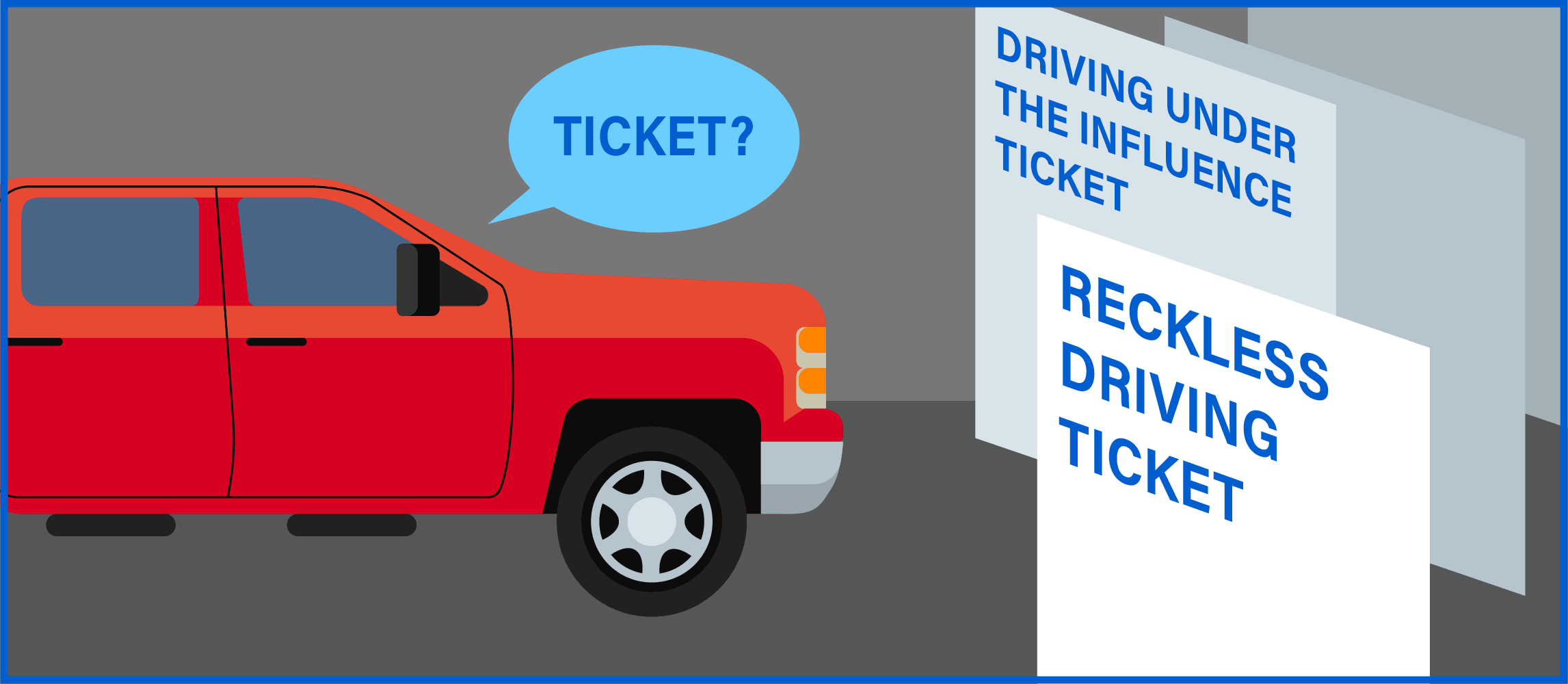
There’s no crime in California that’s specific to backover accidents. However, if you’re involved in a backover accident, you may be charged with distracted or reckless driving, driving under the influence, or other violations, depending on the circumstances.
Who is at Fault in a Backover Accident?
Drivers always have the responsibility to carefully check their surroundings before moving their vehicles. While it’s possible for a backover accident to be truly an accident, most of them are preventable.
In cases where the driver is distracted or not paying attention, the accident may be 100 percent their fault. But it’s also possible for the pedestrian who is hit in a backover accident to be partially or fully at-fault. For example, if the pedestrian is intoxicated and that causes them to step out behind a moving vehicle, they may be found at fault.
Read: CVC 21950: Failure to Yield to a Pedestrian
Consequences of a Backover Accident
Backover accidents cause thousands of injuries and hundreds of deaths each year. This is the worst consequence, and the reason drivers need to work so hard to avoid backover accidents.
If you are found at fault in a backover accident, there may be other consequences. If you’re charged with a misdemeanor or felony traffic violation, you could face steep fines and jail time. If you receive a ticket, you will still need to pay fines and fees, and may see your auto insurance premiums increase. In California, being convicted of a traffic violation also means getting points on your driving record. If you accrue too many points within a certain time period, you may face having your driver’s license suspended or revoked.
Backover Accident Statistics (2023)
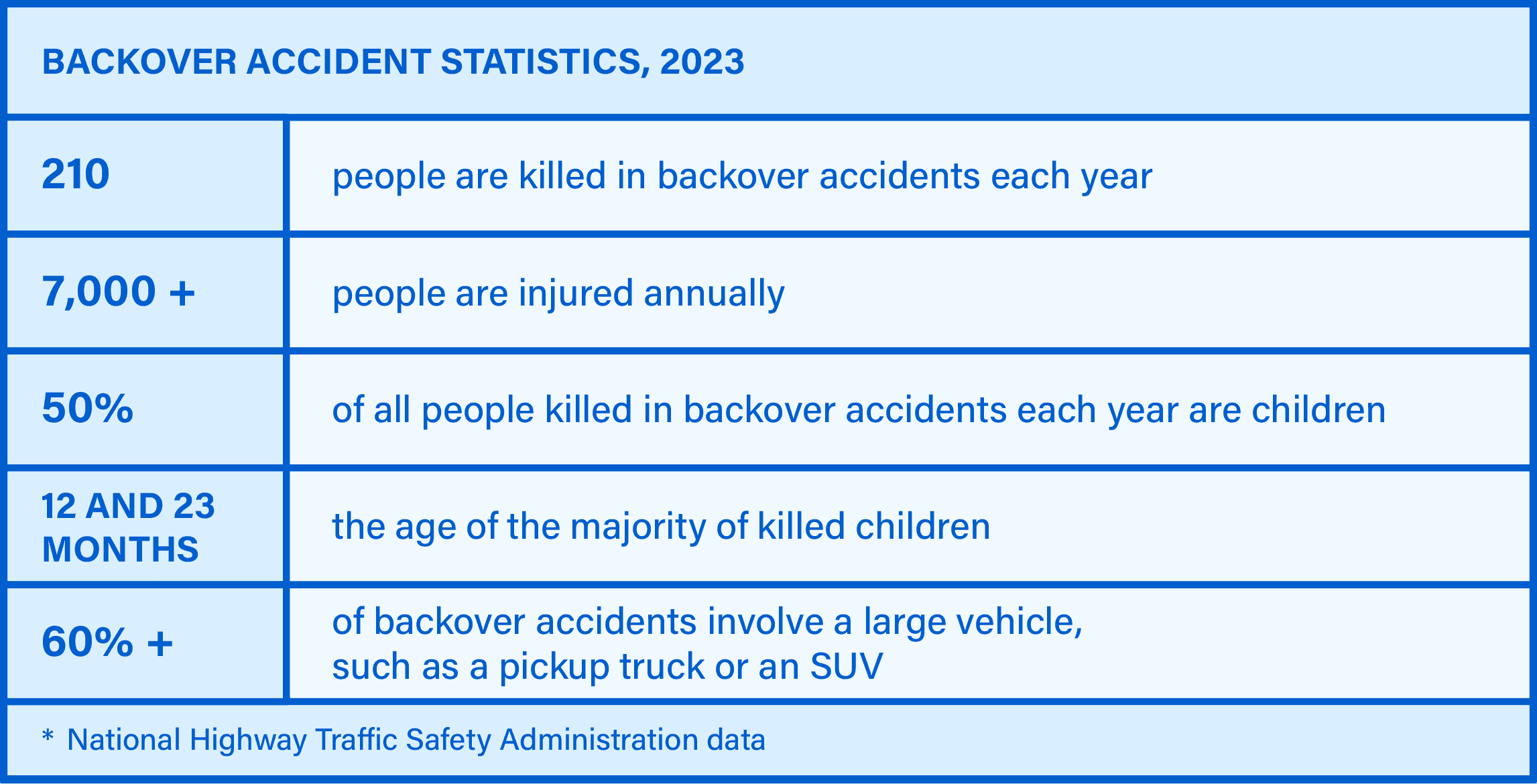
The National Highway Traffic Safety Administration estimates that on average, 210 people are killed in backover accidents each year. More than 7,000 are injured annually.
Approximately half of all people killed in backover accidents each year are children. Of these, the majority are between 12 and 23 months of age.
More than 60 percent of backover accidents involve a large vehicle, such as a pickup truck or an SUV.
In 70 percent of backover accidents involving children, the driver is a parent or relative.
Backover accidents are also common in workplaces; the Bureau of Labor Statistics found that 70 workers were killed in backover accidents while on the job in 2011.
How to Prevent Backover Accidents
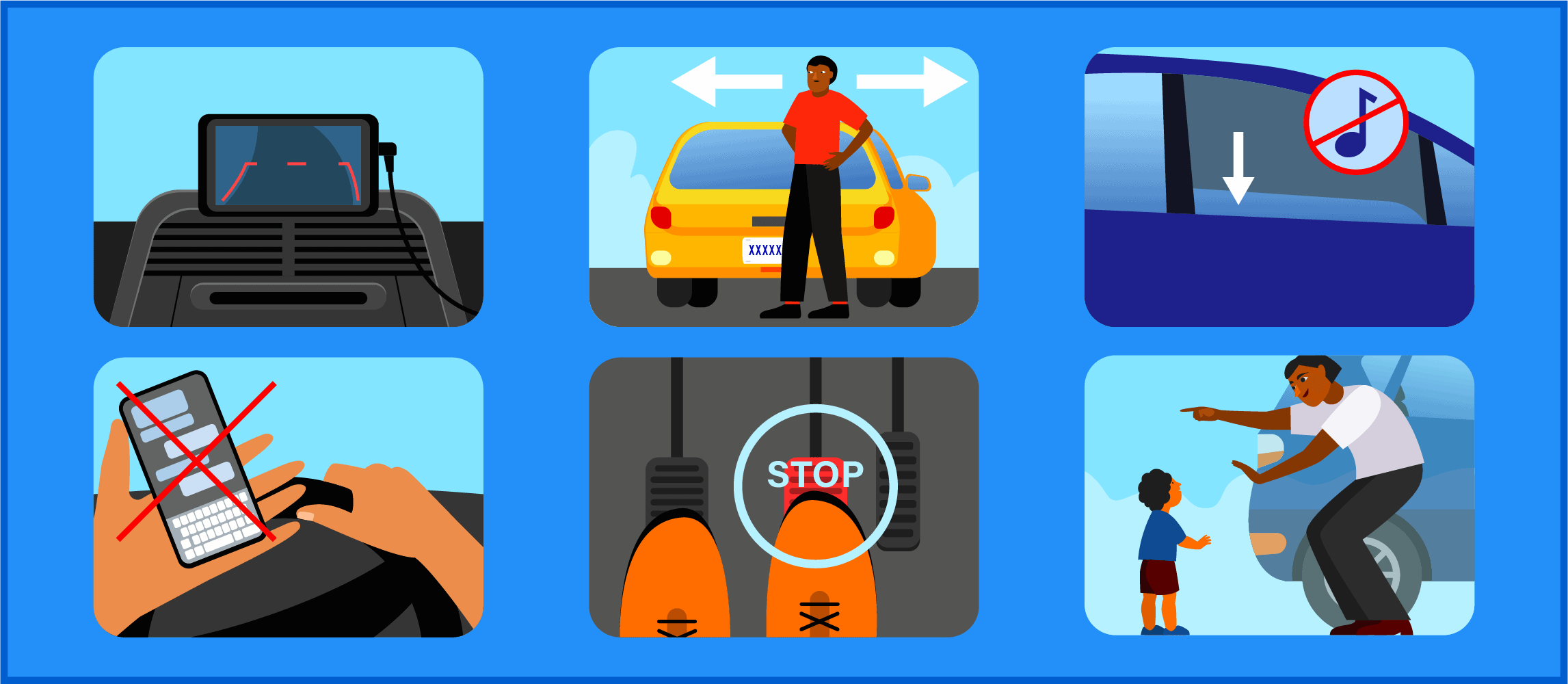
It is every driver’s responsibility to do everything they can to keep the roads safe — for themselves, other drivers, and pedestrians. This means knowing the dangers of backover accidents and taking steps to prevent them. Here’s what drivers can do to reduce the chances of a backover accident when they get behind the wheel.
- Install a backup camera on your vehicle. All new vehicles sold in the U.S. are now required to be equipped with backup cameras. But did you know you can install one on any vehicle, regardless of its age? Installing a backup camera eliminates your blind zone, and is the single most effective way to avoid backup accidents.
- Look all around your vehicle before you get in it. Check the sides and rear of your vehicle. Look at your surroundings to see if there are any pedestrians approaching that you need to be aware of once you get into your vehicle.
- Be aware of your surroundings. Turn off the radio and lower a window so you can hear what’s going on outside your vehicle. Visually check in all directions before putting your vehicle in reverse.
- Put your phone out of sight while driving. Cell phones are a top distraction for drivers. Keep your eyes and mind on the road by putting your phone away every time you get behind the wheel. (Cell phone tickets are also common and expensive!)
- Be prepared to stop. A tragedy can happen very quickly and suddenly. Move your vehicle slowly so you can stop quickly if needed.
- Teach children not to play near traffic and parked vehicles. Start teaching them early, and give them regular reminders. Always supervise children when they are playing outside, even if there don’t seem to be any traffic dangers nearby.
To learn more about California laws around pedestrian safety, check out CVC 21950 Failure to Yield to a Pedestrian.
